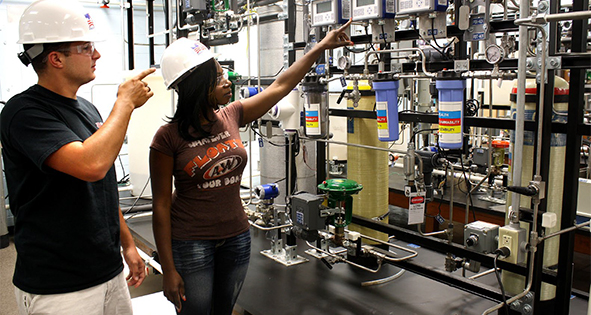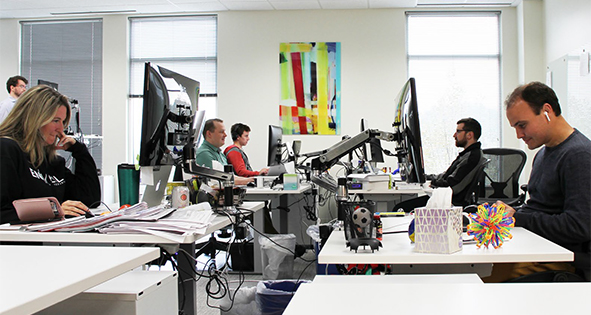
Minnesota: Unexpected Methods for Economic Improvement
19 Sep, 2016
By Lori Culpepper
Minnesota has an unusually high concentration of Fortune 500 companies headquartered in the state, a fact that many citizens are very proud of. This high share of corporate headquarters includes a diverse set of industries, including manufacturing (3M, General Mills and Hormel), financial activities (U.S. Bancorp, Ameriprise Financial), wholesale and retail trade (Target, Best Buy), energy (Xcel Energy) and transportation (C.H. Robinson). The mix of Fortune 500 companies is often credited as one of the key drivers in the state’s economic success.
Job opportunities are the best they have been in years, although many employers are having trouble finding and keeping workers. To attract high-quality candidates, some businesses are considering raising starting wages and offering other incentives. Gallup ranks Minnesota first in the nation in its 2015 Job Creation Index, which is the first time Minnesota has achieved this national distinction. CNBC recently ranked it the best state in the nation for business.
Minnesota was also America’s Top State for Business in 2015, an achievement that is marked by a somewhat controversial strategy by Governor Mark Dayton, the first Democrat to hold the office in two decades. The hallmark of his plan involved a big tax increase.
By 2013, Dayton had pushed through a $2.1 billion tax increase, primarily targeting smokers and wealthy citizens. Last year, Dayton approved a $508 million middle-class tax cut. In 2015, the state had a budget surplus of nearly $2 billion and one of the lowest unemployment rates in the nation. Dayton says this is the groundwork for solid economic growth of the future.
He says that as Minnesota businesses expand, it creates more jobs. As workers at these jobs earn more money, they pay more taxes. However, he says it is the state’s economic success, not tax increases, that have produced the present budget surplus.
Dayton has also supported tax breaks and subsidies for businesses, including a tax increment financing district set up in 2013 to help 3M build a $150 million research facility, and $250 million in state aid over the next 20 years to help the Mall of America build new roads and parking facilities.
Education will also be getting additional funding, an area where Minnesota is already very strong. The state is home to some of the best-performing K–12 students in the nation, and it has led the nation in average composite ACT scores nine years in a row.
For all of these areas of improvements to be successful, Dayton says better transportation is crucial. Additional investments are needed to repair and improve Minnesota’s transportation systems. He says this is needed every year for the next 10 years, or the problems of crowded, unsafe highways, roads and bridges will get much worse. To fund these transportation improvements, Dayton has proposed an unpopular gas tax increase.
City of Elk River
By Rachel Hamilton
Elk River is the county seat of Sherburne County and located just northwest of the Minneapolis Metropolitan Area. Sherburne County is adding an estimated 99,000 square feet to its government offices in a $63.5 million expansion, according to Amanda Othoudt, economic development director for the City of Elk River.
Patriot Converting, Inc., a paper products converter, has recently moved into a 130,000 square foot facility in Elk River to consolidate two plants that were in the city. Die Concepts, which builds “progressive metal stamping tooling” will relocate their business to Elk River and renovate a blighted industrial property, says Othoudt.
Manufacturing is currently a targeted industry in Elk River, according to Othoudt. Plastics companies such as T.O. Plastics and Sportech, Inc. are currently located in the city.
“We have 30 acres of available land for a new datacenter,” she adds. “We are actively seeking partners right now.” The power supply in Elk River operates at 99.98 percent reliability.
“We pride ourselves on our tagline ‘Energy City,’” Othoudt says. The town draws power from Elk River Municipal Utilities and from Great River Energy. There is also a solar energy equipment supplier called Energy City Solutions.
Great River also has a waste energy power plant called Elk River Energy Recovery Station. This plant converts municipal solid waste into energy, producing 29 megawatts of energy from about 1,000 tons of processed waste, Othoudt explains.
Medical device manufacturing is another targeted industry. Metal Craft Machine and Engineering Inc. is already located in Elk River, producing medical tools and implant devices. “They make the parts that go into your knee [for knee replacement surgery],” Othoudt says.
“We have a lot of incentive packages available with the city,” she adds. “We gear these toward expanding business and attracting new businesses.” The city provides incentives particularly for purchasing equipment, energy efficiency and job creation.
Related Posts
-

Business Starts Here
-

TEXAS ENTERS 2021 AS WORLD’S 9TH LARGEST ECONOMY BY GDP
-

CALIFORNIA: 5TH LARGEST ECONOMY IN THE WORLD
-

MINNESOTA: FIRST IN FIVE-YEAR BUSINESS SURVIVAL RATE
-

CANADA: Alberta. More Open Than Ever
-

KENTUCKY: The Bluegrass State Is The Right Place To Grow Your Business
-

TENNESSEE: Great Brands Deserve the Great State of Tennessee
-

LOUISIANA: Custom Workforce for Expanding
-

MARYLAND: Home of Innovators
-

MAINE: Yankee Ingenuity









